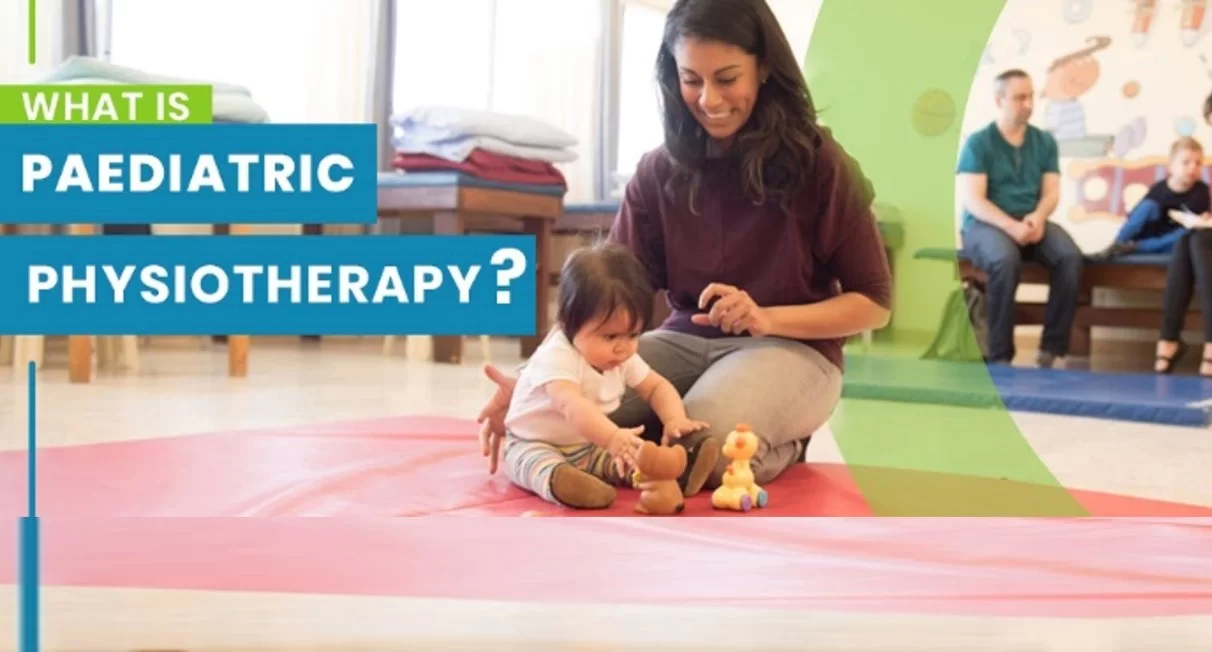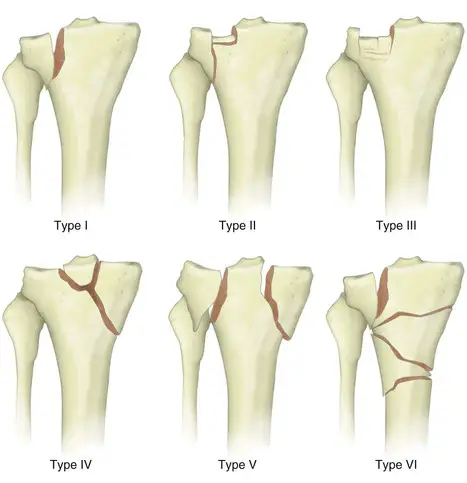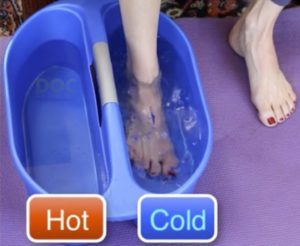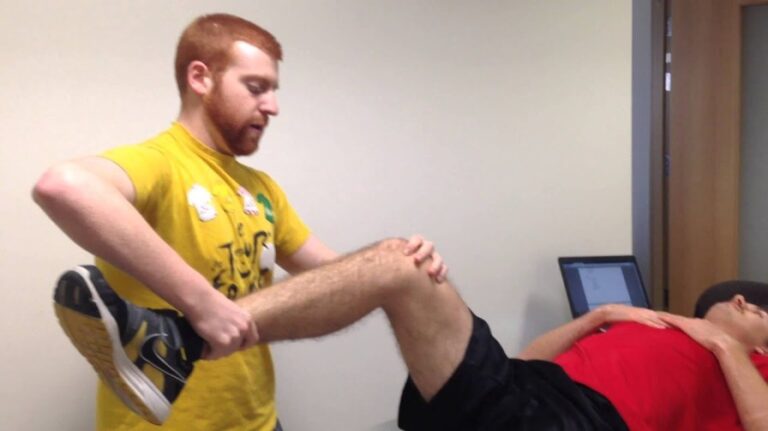Pediatric Physiotherapy Treatment
What is Pediatric Physiotherapy?
Pediatric physiotherapy, also known as pediatric physical therapy, is a specialized branch of physiotherapy that focuses on assessing and treating children with various physical conditions and developmental challenges. The main goal of pediatric physiotherapy is to enhance and promote a child’s movement, functional abilities, and overall physical well-being.
Pediatric physiotherapy has proven to be highly effective in managing perinatal conditions, early childhood diagnoses, and injuries sustained throughout childhood, as well as during the transition to adult care. This specialized form of therapy aims to enhance physical function and overall quality of life in young patients. Its long-term benefits are particularly noteworthy, as it can significantly reduce disability, minimize the necessity for surgery or invasive interventions, and ultimately lessen the burden on future healthcare services.
Pediatric physiotherapy assistance caters to a comprehensive range of acute & chronic illnesses in various settings, spanning from acute care clinics to community centers & schools. Pediatric physiotherapists adeptly estimate, diagnose, & regale neurological, developmental, cardiorespiratory, & orthopedic disorders in children up to 18 years of age. The center’s focus lies in enhancing usable capabilities & fostering freedom in young patients.
Notably, physiotherapy plays a pivotal role in positively impacting pulmonary function, motor control, muscle strength, and physical endurance in children with chronic conditions such as cerebral palsy, cystic fibrosis, and juvenile idiopathic arthritis.
How does pediatric physiotherapy work?
Pediatric physiotherapists play a crucial role in facilitating optimal physical development in children. With their specialized knowledge in movement, growth, and conditions that can impact infants and growing children, they provide comprehensive treatment ranging from one-day-old babies to adolescents. The treatment approach may encompass soft tissue massage, mobilization, stretching, targeted therapeutic exercises, and posture education.
Recognizing that children are not merely small adults, these therapists skillfully engage children in play-based activities and age-appropriate fun, fostering movement to the best of their abilities. By incorporating play and instruction, they create a supportive and encouraging environment for children to achieve their developmental milestones.
Pediatric physiotherapists work within the child’s unique context and family dynamic, extending their services beyond clinical settings. They have the opportunity to collaborate with children in various situations, including home environments, preschool groups, educational settings, and recreational activities.
Given the complex needs of children and their families, pediatric physiotherapists often collaborate with multiple disciplines, including medicine, nursing, social work, educational and care staff, as well as speech and occupational therapists. Effective communication is crucial in such interdisciplinary teams, as the physiotherapist must convey observations, assessments, and treatment plans to the child, parents, and other team members.
Role Of A Pediatric Physiotherapist
A pediatric physical therapist plays a pivotal role in evaluating and treating motor skill issues in children. Their primary objective is to foster the child’s strength and range of motion, enabling them to navigate their environment with ease and efficiency.
Various physiotherapy techniques are employed to address these concerns, including therapeutic massage, muscle stretching, joint mobilization, manipulation, dry needling, and an array of targeted exercises.
The goal of each physiotherapy session is to enhance or correct the child’s flexibility, posture, strength, sensory processing, balance, coordination, and overall motor skills. To make the experience enjoyable and engaging, physiotherapists integrate playful and age-appropriate exercises and activities, keeping the child happy and motivated throughout the process.
In addition to working directly with the child, a pediatric physiotherapist collaborates closely with families, teachers, doctors, caregivers, and other healthcare professionals. This collaborative approach ensures that the child receives comprehensive support and care across various settings.
Furthermore, physiotherapists provide training to parents or caregivers on the proper handling of equipment such as standing frames, pushers, and mobility aids. This training empowers families to provide continuous support and assistance to their children in daily activities.
Principles of Paediatric Physiotherapy
Pediatric physiotherapists play a crucial role in treating children, ranging from infants to teenagers, with specialized knowledge and training focused on growth and development, as well as various syndromes and pediatric diagnoses.
Their expertise helps them to completely estimate, identify, diagnose, & actually regale physiological impairments within pediatric people.
Pediatric physiotherapy employs a comprehensive approach that involves hands-on techniques, targeted exercises, and appropriate interventions. The ultimate goal is to address functional impairments, which may include aspects such as muscle tone, strength, coordination, balance, posture, mobility, and achieving an optimal range of motion.
Central to their practice is the incorporation of the International Classification of Functioning, Disability, and Health (ICF) model, which ensures that treatment not only focuses on impairments but also considers activity limitations and participation. By adopting this model, pediatric physiotherapists strive to help children achieve their fullest potential in daily activities and life.
Recognizing the significance of collaboration, pediatric physiotherapists work as part of a team, wherein the child and their family hold pivotal roles. This team-based approach fosters a supportive and nurturing environment that takes into account the unique needs and preferences of each child, leading to more personalized and effective care.
Goals of Pediatric Physiotherapy
The primary objectives of treatment revolve around the key components of the International Classification of Functioning, Disability, and Health (ICF), with a particular focus on participation and activity performance. A pediatric physiotherapist strives to achieve these goals by addressing pain management, enhancing strength and endurance, and creating learning opportunities to facilitate skill acquisition.
Employing the Family-Centered Intervention and Early Diagnosis model, pediatric physiotherapists work collaboratively within a multidisciplinary team to provide comprehensive care for the child. This team includes not only the family but also a range of other health professionals, forming a multidisciplinary team (MDT). This MDT may comprise specialists such as pediatricians, neurologists, nurses, occupational therapists, psychologists, play therapists, pharmacists, nutritionists, teachers, and more.
By combining the expertise and perspectives of various professionals, the team can holistically address the child’s unique needs and challenges. The family is actively involved in the treatment process, with their insights and preferences being considered throughout. This family-centered approach fosters effective communication, understanding, and collaboration among all team members, resulting in tailored and effective interventions for the child’s well-being.
Throughout the treatment journey, the pediatric physiotherapist ensures that the child receives personalized attention and care, with a focus on promoting participation in daily activities and enhancing the overall quality of life. By embracing a collaborative and patient-centered approach, the pediatric physiotherapy team works tirelessly to support the child’s development, growth, and functional abilities, providing a strong foundation for their future success and happiness.
What are the benefits of Paediatric Physiotherapy?
Pediatric physiotherapy offers a wide array of benefits for children, encompassing various aspects of their physical and functional development:
- Enhances posture and facilitates the integration of reflexes in the child.
- Facilitates smoother and more typical patterns of movement through targeted training.
- Improves gross motor skills, enabling children to perform essential movements effectively.
- Enhances functional mobility, empowering children to navigate their environment with greater ease.
- Promotes muscle balance and strength, contributing to overall physical stability.
- Enhances balance and coordination, vital for the child’s overall physical competence.
- Increases the range of motion, allowing for greater flexibility and movement capabilities.
- Improves muscle tone, fostering better control and coordination of movements.
- Provides gait training and improves walking patterns for a more fluid and efficient gait.
- Addresses respiratory difficulties, supporting children in managing breathing challenges.
- Assists in addressing learning difficulties by optimizing physical capabilities, which can positively impact learning readiness and engagement.
While pediatric physiotherapy offers numerous advantages, it is essential to acknowledge that there may be a scarcity of high-level sustained evidence to fully support all aspects of its impact. Nonetheless, the positive outcomes observed in children who undergo physiotherapy are well-documented and widely recognized, making it a valuable intervention for enhancing their overall physical and functional abilities.
What are the types of Paediatric Physiotherapy?
Pediatric physiotherapists possess a diverse range of treatment techniques to manage and address various conditions in children. Each child’s treatment is tailored to their unique needs, similar to creating a personalized bowl of salad with different combinations. Let’s explore the different types of physiotherapy in the pediatric population:
- Neonatal Physiotherapy: Neonatal physiotherapy focuses on supporting neonates to thrive and survive. Management protocols include chest physiotherapy, positioning, orofacial stimulation, passive movements, and multimodal sensory-motor stimulation.
- Neurodevelopmental Physiotherapy: This form of therapy is targeted towards children with neurological disorders causing gross motor developmental delay or children with gross motor developmental delay without other central nervous system issues. Techniques aim to achieve gross motor milestones, manage spasticity, and improve balance and coordination. Examples include Neuro Developmental Therapy (NDT), Constraint Induced Movement Therapy (CIMT), the Vojta technique, taping techniques, functional electrical stimulation, and balance and coordination training, including Frenkel’s exercises.
- Orthopedic Pediatric Physiotherapy: Orthopedic physiotherapy is provided to children involved in sports, with congenital deformities, or who have suffered muscle or ligament injuries. The approach involves treating pain and spasms, improving strength and endurance, and correcting deformities and posture to restore normal daily activities. Treatment methods may include using machines to relieve pain and spasms, scar mobilization, muscle stretching and strengthening, endurance training, contrast therapy, and heat and cold therapy.
- Cardiopulmonary Pediatric Physiotherapy: While the principles of techniques used here remain similar to those for adults, the application changes considering the constantly growing population. Strategies contain chest physiotherapy, positioning, breathing exercises, respiratory muscle strengthening, & energy conservation techniques.
Common Treatment Approaches and Exercises
Examples of Specific Treatment Approaches:
- Bobath Approach: This neurodevelopmental treatment aims to improve developmental sequences, inhibit abnormal patterns, facilitate normal postural control, and use sensory stimuli for muscle movement activation or inhibition.
- Motor Learning: Beneficial for treating infants with cerebral palsy, this approach focuses on learning and refining motor skills through repetitive practice.
- Conductive Education Approach: A comprehensive treatment model that encompasses all aspects of life, overseen by a “conductor” who guides and supports the child’s activities.
- The Margaret Rood Technique: This approach utilizes superficial and deep stimulation to activate or inhibit motor activity.
- The Temple Fay Technique: Sequential developmental movement patterns are used to activate normal movement patterns.
- The Doman-Delacato Technique: Repetitive movements of normal sequential developmental patterns are employed to stimulate dormant central nervous system pathways in the brain.
- The Kabat-Knott-Voss PNF Technique: Proprioceptive neuromuscular facilitation is applied using functional movement patterns.
- Urotherapy: Delivered by technical physiotherapists, this therapy concentrates on regaling incontinence problems via pelvic floor muscle exercise, neuromodulation, lifestyle modifications, & behavioral adaptation.
To ensure motivation and improve functionality, play-based therapy is often incorporated whenever possible. The cooperation and engagement of the child play a vital role in determining which techniques are most effective.
Examples of Specific Exercises for Pediatrics:
- Passive Movements: Therapists perform anatomical and functional movements on the child without active participation to teach movements, reduce spasticity, and prevent joint stiffness or deformity.
- Stretching and Strengthening Exercises: Children perform exercises to strengthen weak muscles and stretch tight muscles using weight cuffs, therabands, gravity, or their own weight.
- NDT (Neuro-Developmental Therapy): A hands-on technique to correct and teach movements in children lacking movement, repeatedly exposing them to gain control and use a wide range of movements in daily life.
- Chest Physiotherapy: Used to help clear chest secretions, it includes techniques like percussion, vibration, postural drainage, and suctioning, benefiting children with respiratory conditions.
- Aquatic Therapy: Conducted in water, this therapy adds fun and motivation to exercises, particularly beneficial as water cancels out gravity, making movements easier.
Pediatric physiotherapists are available in various settings, including NICU & PICU, outpatient settings, clinics, child health and development centers, schools, sports clubs, and individual homes. They provide essential care and support to children across diverse environments, focusing on their unique needs to achieve optimal physical development and functional abilities.
What are common conditions treated by pediatric physiotherapy?
Pediatric physiotherapists play a critical role in providing specialized treatment for children aged between 0 and 18 years who face challenges with their physical development due to neurological and/or developmental issues. Neurological conditions can arise from problems with the brain, spinal cord, or peripheral nerves, affecting a child’s mobility, muscle strength, range of motion, and balance.
These highly skilled professionals possess extensive experience in treating a wide range of neurological pediatric conditions, including:
- Gross Motor Delay
- Autism Spectrum Disorder
- Cerebral Palsy
- Developmental Coordination Disorder
- Down Syndrome
- Spina Bifida
- Acquired Brain Injury
- Hypotonia
- Muscular Dystrophy or other neuromuscular challenges
- Torticollis/Plagiocephaly
- Other genetic disorders
- Weight challenges
- Athlete
Cerebral Palsy or Other Movement Disorders
Early intervention by a qualified pediatric physiotherapist has been shown to significantly improve the function of young children diagnosed with neurological movement disorders. The benefits of early physiotherapy are invaluable, as it helps children learn essential movement skills crucial for their overall development. Pediatric physiotherapists are skilled at identifying movement impairments at an early stage, enabling timely intervention to address potential concerns.
Recognizing gross motor delays early on allows for the prompt diagnosis of conditions like cerebral palsy, which is crucial for implementing effective treatment strategies. Many parents express their wish to have known about the option of early physiotherapy for their child, emphasizing the importance of raising awareness about its potential benefits.
Pediatric physiotherapists play a key role in closely monitoring the development of gross motor skills in children, ensuring that they meet all the necessary developmental milestones. For children with neurological conditions, such as cerebral palsy, early intervention has a profound impact on their progress and overall well-being.
Physiotherapy offers a range of benefits for children with neurological movement disorders, including:
- Reducing or managing spasticity, helping children gain better control over their muscle tone.
- Improving strength and endurance, supporting their ability to perform physical activities more efficiently.
- Assisting in the development of gross motor skills, enabling children to achieve milestones appropriate for their age.
- Providing equipment recommendations and assistance, ensuring children have access to the right tools for their unique needs.
- Enhancing motor control, helping children achieve more precise and coordinated movements.
- Assessing and refining gait, optimizing their walking patterns for improved mobility.
- Improving functional independence, empowering children to participate more actively in daily activities.
Torticollis
Torticollis is a condition where a child presents with shortened neck muscles, leading to a preference for looking and moving the neck in one direction. If left untreated, this can have significant effects on skull development, potentially causing facial asymmetries, skull deformities, and delays in gross motor development. Early intervention by a pediatric physiotherapist can play a crucial role in preventing these issues.
Recently, I have had the opportunity to work with three newborns diagnosed with torticollis, all referred to me within two weeks of birth. Through early intervention, they are showing great progress, with a significantly improved range of neck movement. Apart from providing guidance to parents for home management, I am closely monitoring their development, ensuring they reach their gross motor milestones and promoting symmetrical facial and skull development. Early intervention is of utmost importance in these cases.
Physiotherapy offers several ways to help children with torticollis:
- Restore Flexibility and Strength of the Neck: Physiotherapy techniques can help improve the range of motion of the neck by addressing the shortened neck muscles and promoting flexibility.
- Prevent Skull and Facial Deformity: By addressing the underlying cause of torticollis and guiding appropriate positioning and exercises, physiotherapy can prevent skull and facial deformities from developing.
- Optimize Positioning for Play: Pediatric physiotherapists can advise parents on optimal positioning and play activities to encourage balanced and symmetrical movements, promoting healthy development.
- Ensure Appropriate Gross Motor Skills Development: Physiotherapy interventions can help ensure that gross motor skills develop appropriately, supporting the child’s overall physical development.
Sports Injuries & Orthopedic Conditions
Whether it’s a fall off a bike, diving into first base, or a rough check into the boards, parents can rest assured that pediatric physiotherapists are well-trained to address their child’s musculoskeletal injuries. Our expertise enables us to assess your child’s physical injuries accurately and apply age-appropriate interventions to ensure a safe and effective return to sports or other activities. One of the parents I recently worked with shared that their child had seen a different physiotherapist but didn’t achieve the same level of success. When the mom sought my services, her child showed significant improvement. This success can be attributed to my ability to address the child’s limitations while also taking into account their specific developmental needs.
Physiotherapy offers various ways to help your child recover from orthopedic or sports injuries:
- Clinically Diagnose Any Orthopedic or Sports Injury: As pediatric physiotherapists, we have the expertise to accurately diagnose the nature and extent of the injury, ensuring proper treatment is administered.
- Improve Sport-Specific Skills: We design targeted interventions to enhance your child’s sport-specific skills, facilitating their safe return to their chosen activity.
- Reduce Pain and Inflammation: Through specialized techniques, we can effectively manage pain and inflammation, promoting a smoother recovery process.
- Improve Flexibility and Strength: We tailor exercises and interventions to improve your child’s flexibility and strength, supporting their overall physical performance and injury prevention.
Posture
Physiotherapy offers valuable assistance in various aspects related to optimizing posture and overall well-being:
- Optimize Breathing, Alignment, and Core: Our specialized approach focuses on enhancing breathing techniques, aligning the body properly, and strengthening the core muscles. These elements are interconnected and crucial for maintaining a healthy and well-balanced posture.
- Educate on Proper Computer/Device Positioning: As technology becomes an integral part of daily life, it’s essential to educate children and parents on the correct positioning of computers and devices. By providing guidance on ergonomics, we help prevent posture-related issues and strain on the body.
- Recommend Posture-Improving Products: Pediatric physiotherapists are well-versed in the available products and devices that can aid in improving posture. We offer valuable information and recommendations to support children in maintaining optimal posture during various activities.
Floppy or Low Tone
If you’ve noticed that your child has difficulty keeping their head in midline, struggles with movement, or seems “floppy,” they may be experiencing low tone or hypotonia. Pediatric physiotherapists excel at evaluating muscle tone and possess proven techniques to enhance your child’s muscle tone and overall physical abilities.
Physiotherapy offers valuable assistance in addressing low tone or hypotonia:
- Improve Strength and Endurance: Through targeted exercises and interventions, pediatric physiotherapists work to enhance your child’s muscle strength and endurance, promoting better overall physical function.
- Increase Motor Control and Balance: Physiotherapy interventions focus on improving motor control and balance, helping your child achieve more coordinated movements and postural stability.
- Educate on Devices for Improved Alignment and Tone: Pediatric physiotherapists provide education on the use of devices and equipment that can assist in improving alignment and muscle tone, supporting your child’s physical development.
- Enhance Age-Appropriate Gross Motor Skills and Coordination: By tailoring interventions to your child’s specific needs and developmental stage, physiotherapists help them acquire and refine age-appropriate gross motor skills and coordination.
Coordination
If your child is struggling to catch a ball, skip, or their running appears awkward, it could be indicative of coordination difficulties. In such cases, pediatric physiotherapists are well-equipped to address these challenges as they regularly work with children facing coordination disorders. Leveraging their extensive knowledge of child development, they can effectively tackle coordination issues.
Physiotherapy offers valuable assistance in improving coordination:
- Identify Key Sources of Coordination Issues: Pediatric physiotherapists conduct thorough assessments to pinpoint the underlying sources of coordination difficulties. By understanding the specific factors contributing to the problem, they can tailor targeted interventions.
- Develop Comprehensive Strength Training to Improve Coordination: Through specialized strength training exercises, pediatric physiotherapists help improve your child’s coordination. Strengthening the relevant muscle groups and motor pathways can enhance their ability to perform coordinated movements.
- Improve Balance: Physiotherapy interventions focus on enhancing balance, which is crucial for coordinated movements. By addressing balance deficits, pediatric physiotherapists enable your child to move with greater stability and confidence.
Toe Walking
If your child has been toe walking since they took their first steps, and your doctor assured you they would outgrow it, but years have passed and they still haven’t, it’s essential to take proactive steps. Contrary to the belief that children will naturally outgrow toe walking, it often persists and can be a sign of an underlying issue. Pediatric physiotherapists recognize the importance of addressing toe walking with a comprehensive approach that goes beyond just focusing on the feet.
Physiotherapy offers valuable assistance in managing toe walking:
- Assess Underlying Causes of Toe Walking: Pediatric physiotherapists conduct thorough assessments to identify the root causes of toe walking. Understanding the contributing factors helps tailor an effective treatment plan.
- Develop an Appropriate Stretching and Strengthening Program: A key aspect of addressing toe walking involves designing a customized program that includes targeted stretching and strengthening exercises. These exercises aim to improve muscle flexibility, strength, and coordination.
- Advise and Educate on Appropriate Interventions and Orthotic Devices: Pediatric physiotherapists provide valuable guidance on suitable interventions and orthotic devices if needed. Orthotic devices can aid in correcting foot positioning and supporting proper gait.
The initial assessment of your child by a pediatric physiotherapist encompasses a comprehensive evaluation of their development, movement, strength, and balance. Based on the assessment findings, a structured and personalized treatment program will be designed, which may include the following components:
- Stretching: Targeted stretching exercises are incorporated to improve muscle flexibility and address any tightness or contractures.
- Strengthening: Specialized strength training exercises are prescribed to enhance muscle strength, supporting better overall physical function.
- Re-educating Normal Movement Patterns: Children with movement difficulties may benefit from re-education techniques that help them learn and adopt more natural and functional movement patterns.
- Balance Training: Balance exercises are employed to improve postural stability and coordination, enabling your child to move with greater confidence and control.
- Improving Standing and Quality of Walking: Interventions are tailored to enhance standing posture and optimize the quality of your child’s walking pattern.
- Advice and Support for Parents and/or Teachers: Pediatric physiotherapists offer valuable guidance and support to parents and teachers, helping them reinforce therapeutic techniques and create a supportive environment for the child.
- Milestone Development: Progress towards developmental milestones is closely monitored and supported, ensuring that your child is on track with their physical development.
- Working on Fine and Gross Motor Skills: Therapeutic activities are incorporated to improve both fine motor skills (such as handwriting) and gross motor skills (such as running and jumping).
Who can benefit from pediatric physiotherapy?
Pediatric physiotherapists maintain technical expertise in evaluating, analyzing, & treating child growth & movement difficulties. Their highly developed hands-on skills are combined with a fun, creative, and playful approach to creating individualized therapy programs for each child. These treatment programs aim to optimize the health, well-being, and abilities of the child, enabling them to participate in everyday activities, such as playing, learning, going to school, and being part of a family and community. One of the primary focuses of pediatric physiotherapy is to help children with developmental problems reach their developmental milestones within the expected timeframes.
Developmental milestones are essential parts that all children learn/develop at certain age ranges. They include skills like head control, rolling, crawling, walking, and talking. By providing physiotherapy treatment for children with neurological or developmental problems, pediatric physiotherapists work to maximize their potential and promote physical development, assisting them in achieving specific milestones, such as rolling, crawling, and walking.
Pediatric physiotherapists can address a wide range of movement disorders or difficulties, including:
- Babies and children who are slower to achieve their motor milestones, such as sitting, crawling, or walking.
- Babies and children who are using unusual movement patterns, such as w-sitting, bottom shuffling, or toe walking.
- Children who are experiencing challenges with motor skills, such as jumping, hopping, or ball skills.
- Toddlers and babies who demonstrate clumsiness or lack of coordination.
- Children who have sustained injuries or trauma and require rehabilitation to regain their optimal function.
- Children with rumination, a condition characterized by regurgitation of food.
Conclusion
Just as children develop and grow day by day, the field of pediatric physiotherapy is also evolving and expanding. With ongoing research and advancements, new techniques are continuously being studied and developed to provide even better and more effective treatments for kids. This dynamic nature of pediatric physiotherapy demands constant updating of knowledge and skills by professionals in the field. Pediatric physiotherapists are dedicated to staying at the forefront of their field to ensure that they can deliver the best care possible for their young patients.
For parents, this constant growth and improvement in pediatric physiotherapy mean that their child is in safe and capable hands. They can have confidence in knowing that their little one’s care is backed by the latest evidence-based practices and techniques. With pediatric physiotherapists committed to continuous learning and development, parents can be assured that their child’s treatment is tailored to meet their specific needs and optimized for the best possible outcomes.
FAQs
What does a pediatric physiotherapist do?
Pediatric physiotherapy treatment is established on several hands-on strategies, exercises, & interventions to address practical impairments involving muscle tone, strength, coordination, balance & posture, mobility, & executing an optimal range of motion (ROM).
What are common physiotherapy conditions in children?
Adolescent Idiopathic Scoliosis and Back Pain.
Angelman Syndrome.
Annular Ligament.
Arthrogryposis Multiplex Congenita.
Asperger Syndrome.
Attention Deficit Disorders.
Atypical Clubfoot.
Autism Spectrum Disorder.
Is physiotherapy good for children?
After damage, physical therapists work to reduce pain, enhance movement, & assist kids return to day-to-day actions. They train kids in activities planned to assist them recover strength & range of motion (ROM) & even show kids & relatives how to control future damages.
What are the complications of physiotherapy?
Regardless, some individuals may undergo additional extreme side effects, for example, joint aches, muscle cramps, nerve aches, tingling, & numbness. If you encounter any of these symptoms, it is essential to contact the physiotherapist/physiotherapy clinic.
What is the best age to start physical training?
During childhood, children enhance their body awareness, control, & balance via active play. As earlier as age 7/8, regardless, strength exercise can evolve into a helpful part of a general fitness plan as long as the child is grown up adequately to follow directions & capable to practice proper strategy & form.
Is it safe to do physiotherapy at home?
Yes, But that reaction comes with a caveat. If you intend to look up a group of activities online & attempt accomplishing them whenever you can encounter the time, your at-home physical therapy regimen is likely not going to perform very well. Physiotherapy is advantageous for the assembly of injuries & illnesses.








4 Comments